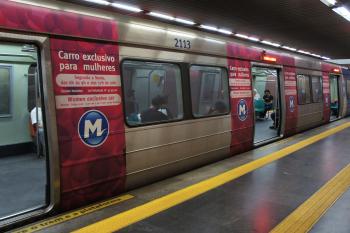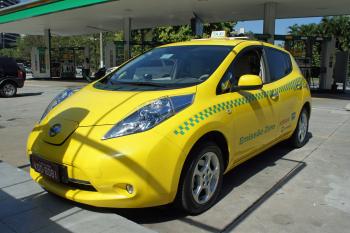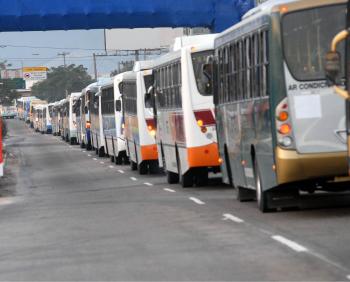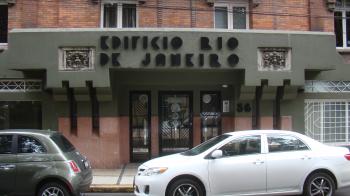Getting Around Rio de Janeiro
Getting Around Rio de Janeiro
All City Transport Options: What Locals Use and What’s Best for Tourists
General Overview
Getting around Rio de Janeiro can be a bit of a puzzle at first, but you get the hang of it after a while. The main thing to remember is that the public transport system is fairly efficient and offers a mix of options. You've got buses, the metro, and the iconic trams in Santa Teresa—all useful for navigating this vibrant city. The metro operates typically from 5 AM to midnight, while buses run almost 24 hours, although frequency can drop significantly late at night.A common mistake visitors make is relying too much on taxis or rideshares, thinking they’re the easiest way to get around. Sure, they’re convenient, but at R$80-100 for a ride from Copacabana to downtown, you could easily spend a lot on transport. The metro fare is only R$5.60, and a bus can cost around R$4, making public transport a much better deal.
Oh, before I forget, if you’re ever in a rush, try to avoid taking the metro during peak hours (7 AM to 9 AM and 5 PM to 7 PM). It can get packed like sardines, and though the trains are frequent, you might not get a seat during those times. I had a memorable experience stuck in a crowded metro car on my way to a beach party—definitely not the relaxing start I had envisioned!
A pleasant surprise was how friendly the bus drivers can be. One time, I got on the wrong bus in Lapa and the driver took the time to explain how to get to my destination. Very helpful! And here’s a money-saving tip: consider the “Bilhete Único” card, which allows you to use multiple forms of transport within a 2-hour period for only R$6.20—great for hopping on and off buses and trains.
If you’re heading to Sugarloaf mountain, take Line 1 of the metro to the Botafogo station, then catch a bus or a short taxi ride from there. Also, keep in mind that the weather can be a factor. It rains occasionally, and buses can be delayed—so keep that umbrella handy!
Lastly, while Rio’s transport is generally safe, always be aware of your belongings, especially on crowded buses or metro. Enjoy your time navigating this beautiful city!
Types of Transport

popular with tourists
The metro in Rio de Janeiro is a quick and efficient way to navigate the city, with four main lines (Line 1, Line 2, Line 4, and Line 5) that connect key areas such as Copacabana, Ipanema, downtown, and Barra da Tijuca. A single ticket costs around R$5.00 and can be purchased at ticket machines or counters in the metro stations; it's important to keep your ticket until you exit the station. For tourists, it’s highly recommended to use the metro to avoid traffic jams, especially during rush hours, and to stick to Line 1, which stops at several major attractions, including the Maracanã Stadium and the Museu de Arte Moderna. Additionally, always be mindful of your belongings, as pickpockets can operate in crowded areas, and try to travel during the day for added safety. Lastly, download the app "Metrô Rio"; it provides routes, schedules, and real-time information to help you navigate seamlessly.

popular with tourists
Walking in Rio de Janeiro is an excellent way to explore the city's vibrant neighborhoods, stunning views, and beautiful beaches, particularly in areas like Copacabana, Ipanema, and Santa Teresa. There is no cost associated with walking, making it a budget-friendly option for tourists; just ensure you have comfortable shoes and a good map or smartphone app to navigate. A key tip is to use the iconic Avenida Atlântica promenade, which runs along Copacabana Beach, as it's not only picturesque but also a well-pedestrianized zone.
For a time-saving advice, consider starting your walks early in the morning to enjoy the cooler temperatures and fewer crowds, especially if visiting popular sights like Sugarloaf Mountain or Christ the Redeemer. Always stay aware of your surroundings, particularly in less crowded areas, and it’s best to avoid flashy jewelry to ensure a safe and enjoyable walking experience in the city.
For a time-saving advice, consider starting your walks early in the morning to enjoy the cooler temperatures and fewer crowds, especially if visiting popular sights like Sugarloaf Mountain or Christ the Redeemer. Always stay aware of your surroundings, particularly in less crowded areas, and it’s best to avoid flashy jewelry to ensure a safe and enjoyable walking experience in the city.

Taxis in Rio de Janeiro are widely available and can be hailed on the street or booked via apps like 99 or Uber, which are often more convenient. Fares generally start around R$10 and can increase based on distance, time of day, and additional fees for luggage or late-night rides. When traveling to popular tourist spots like Copacabana and Christ the Redeemer, ensure that the driver uses the meter, as negotiated prices can sometimes lead to overcharging. It's prudent to ask the hotel staff for guidance on safe pickup points and to avoid taking taxis from unofficial ranks, especially late at night. To save time, keep a list of your destinations written down, as some drivers may not speak English fluently.

The bus network in Rio de Janeiro is extensive, covering key tourist areas such as Copacabana, Ipanema, and Santa Teresa, making it an affordable way to explore the city. A one-way bus fare is around R$4.50, and you can pay using a prepaid Riocard, which can be purchased and recharged at various kiosks and convenience stores throughout the city. To make the most of your time, familiarize yourself with the bus routes using apps like Moovit or Google Maps, which provide real-time information and can help you navigate the options efficiently. Always try to travel during daylight hours and keep your belongings secure, as petty theft can occur, particularly on crowded routes. If possible, ask locals for bus numbers to popular destinations; they often have valuable insights on the best options.

Auto services in Rio de Janeiro, such as taxis and rideshare apps like Uber, are readily available and cover most tourist destinations, from Copacabana to Christ the Redeemer. Typical fares for a ride within the city range from R$15 to R$50, depending on distance and traffic, and rideshare options often offer upfront pricing and fare estimates through their app. For convenience, it's advisable to always confirm your driver's identity in the app and choose well-lit pick-up areas, especially at night.
Traffic congestion is common in Rio, particularly during rush hours (7-9 AM and 5-8 PM), so planning your trips outside these times can save you a considerable amount of time. Additionally, be cautious about leaving valuables visible in the car; this will help reduce any risk of theft.
Traffic congestion is common in Rio, particularly during rush hours (7-9 AM and 5-8 PM), so planning your trips outside these times can save you a considerable amount of time. Additionally, be cautious about leaving valuables visible in the car; this will help reduce any risk of theft.
Here you can learn about all types of transport in Rio de Janeiro. What transport is available, how to reach tourist attractions and which mode of transport is optimal.
